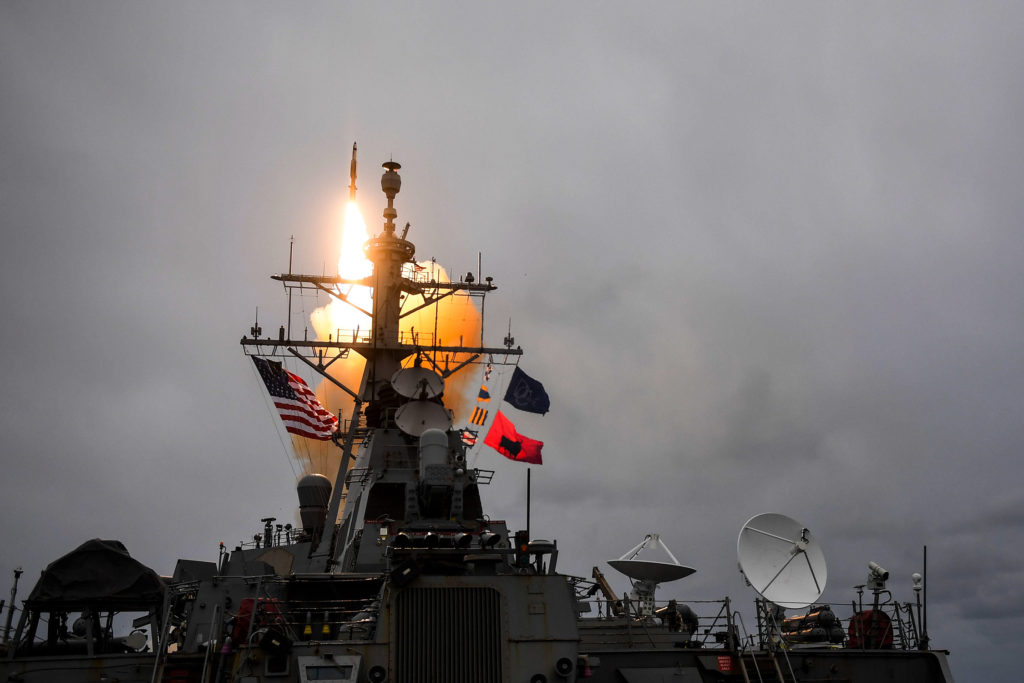The U.S. successfully conducted an interception of a medium-range ballistic missile target with a Standard Missile-3 Block IIA missile during a flight test, the Missile Defense Agency said, the first successful test of the interceptor missile since February 2017.
The SM-3 was launched from the USS John Finn (DDG-113) off the west coast of Hawaii on Friday, October 26, the MDA said in a release.
The ship detected and tracked a target missile launched from the Pacific Missile Range Facility at Kauai using its AN/SPY-1 radar and Aegis weapon system.
“Based on observations and initial data review, the test met its objectives,” the MDA said, adding that the performance evaluation is ongoing.
The SM-3 Block IIA is being developed by the U.S. and Japan as part of the AEGIS Ballistic Missile Defense system. The missile is jointly developed by Raytheon and Mitsubishi Heavy Industries, with Mitsubishi reportedly managing the third-stage rocket motor and nose cone.
It uses a kinetic warhead to strike the target, the so-called “hit-to-kill” approach.
The first successful test of the Block IIA variant occurred in 2015, but more recent tests have been hit and miss.
A January 31 test from an AEGIS Ashore test site of a SM-3 Block IIA apparently failed, but officials did not explain what had happened.
In a test on June 21, 2017, an SM-3 launched by USS John Paul Jones did not intercept its target. The MDA later said that a sailor mistakenly designated the target as friendly, causing the SM-3 to self-destruct, as designed.
The last successful test was on February 3, 2017, when the Missile Defense Agency said the USS John Paul Jones destroyed a medium-range ballistic missile using an SM-3 in a test in cooperation with Japan’s ministry of defense.
In January, the US approved the sale to Japan of four SM-3 missiles, a sale that a State Department official said would “follow through on President Trump’s commitment to provide additional defensive capabilities to treaty allies threatened by the DPRK’s provocative behavior.”



